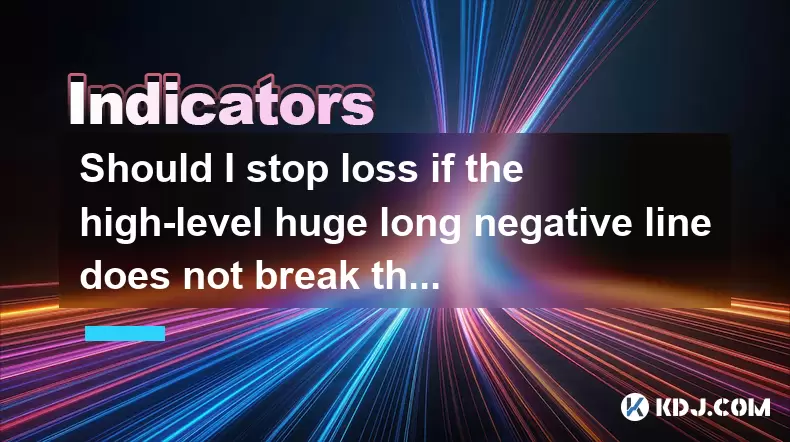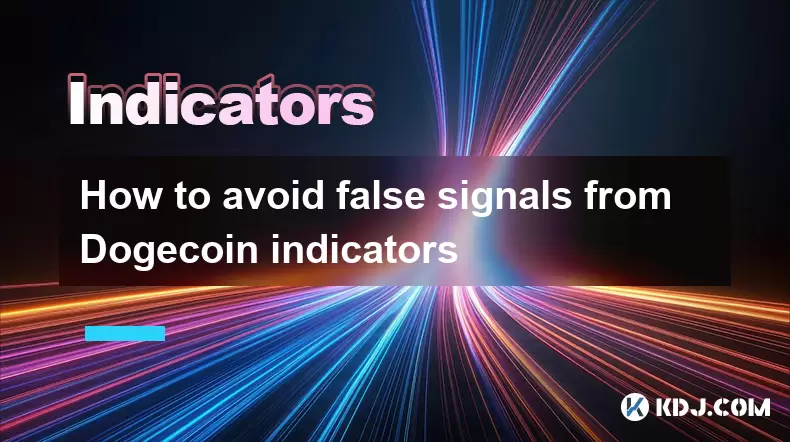-
 Bitcoin
Bitcoin $108,250.0992
0.11% -
 Ethereum
Ethereum $2,515.9404
0.03% -
 Tether USDt
Tether USDt $1.0003
0.00% -
 XRP
XRP $2.2166
-0.19% -
 BNB
BNB $656.5904
0.29% -
 Solana
Solana $147.4122
-0.58% -
 USDC
USDC $1.0000
-0.01% -
 TRON
TRON $0.2830
0.06% -
 Dogecoin
Dogecoin $0.1641
0.27% -
 Cardano
Cardano $0.5739
-0.19% -
 Hyperliquid
Hyperliquid $39.1463
-0.11% -
 Sui
Sui $2.8882
-0.02% -
 Bitcoin Cash
Bitcoin Cash $487.6428
0.31% -
 Chainlink
Chainlink $13.2097
0.07% -
 UNUS SED LEO
UNUS SED LEO $9.0308
0.10% -
 Avalanche
Avalanche $17.8608
0.13% -
 Stellar
Stellar $0.2379
-0.06% -
 Toncoin
Toncoin $2.7400
-0.39% -
 Shiba Inu
Shiba Inu $0.0...01144
-0.36% -
 Litecoin
Litecoin $87.5467
0.66% -
 Hedera
Hedera $0.1538
0.22% -
 Monero
Monero $315.5479
0.36% -
 Dai
Dai $1.0000
0.00% -
 Polkadot
Polkadot $3.3523
-0.71% -
 Ethena USDe
Ethena USDe $1.0003
0.01% -
 Bitget Token
Bitget Token $4.3960
-1.03% -
 Uniswap
Uniswap $7.2663
4.19% -
 Aave
Aave $272.8619
2.04% -
 Pepe
Pepe $0.0...09676
-0.18% -
 Pi
Pi $0.4586
-2.87%
Should I stop loss if the high-level huge long negative line does not break the ten-day line?
A high-level huge long negative line signals strong selling pressure but doesn't confirm a trend reversal unless it breaks key support like the 10-day MA.
Jul 02, 2025 at 04:36 pm

Understanding the High-Level Huge Long Negative Line
In technical analysis within cryptocurrency trading, a high-level huge long negative line typically refers to a candlestick pattern that appears at a resistance zone or after a significant uptrend. This candlestick has a large red (or bearish) body and often signals strong selling pressure. The appearance of such a candle may raise concerns among traders about whether they should implement a stop-loss strategy.
The key feature of this candle is its location — it forms at a high level in the chart where prices have already experienced a substantial move upward. Its bearish nature suggests a potential reversal or at least a pause in the uptrend. However, the presence of this candle alone isn't sufficient to justify a stop-loss unless it breaks critical support levels such as the 10-day moving average.
A high-level huge long negative line indicates increased selling pressure but doesn’t necessarily confirm a trend reversal.
The Role of the Ten-Day Moving Average
The ten-day moving average (MA) serves as a crucial dynamic support or resistance level for many traders. When price remains above this MA during a pullback, it often indicates that the overall uptrend remains intact. Conversely, if the price closes significantly below the ten-day MA, it may suggest a shift in momentum.
Traders often use the ten-day MA as a reference point to decide when to exit a trade. If a bearish candle appears but does not break this moving average, it could mean that the market still holds enough bullish sentiment to continue the trend.
If the ten-day moving average hasn’t been broken, the trend may still be valid despite a bearish candle.
Evaluating Volume and Context
Volume plays a critical role in confirming or rejecting the strength behind a high-level huge long negative line. If this candle appears on unusually high volume, it may indicate strong institutional selling, which increases the likelihood of a trend reversal. On the other hand, if the volume is low or in line with normal trading activity, the candle might just represent short-term profit-taking rather than a broader shift in sentiment.
It's also essential to evaluate the context in which this candle appears. For instance:
- Is the market in a clear uptrend or sideways consolidation?
- Are there any upcoming events or news that could impact price action?
- How far is the price from key support zones?
These factors help determine whether the bearish candle is a warning sign or just part of normal volatility.
- High volume accompanying a negative candle increases the probability of a trend change.
- Contextual awareness helps distinguish between temporary corrections and actual reversals.
Strategic Stop-Loss Placement
Deciding whether to place a stop-loss depends on several factors beyond just the candlestick itself. One effective method is to place the stop slightly below the ten-day MA if it hasn’t been breached yet. Alternatively, you can look at recent swing lows or Fibonacci retracement levels to identify logical stop points.
Some traders prefer a tighter stop-loss just below the low of the bearish candle, while others opt for a more forgiving placement under the moving average. Each approach carries different risk-reward implications and depends on your trading style — aggressive scalping versus longer-term swing trading.
- Placing stops based on key technical levels reduces emotional decision-making.
- Consider both candle lows and moving averages when setting stop-loss orders.
Psychology Behind Market Behavior
Market psychology heavily influences candlestick formations and how traders react to them. A high-level huge long negative line often triggers fear among retail traders who interpret it as a sell signal. Institutional players, however, may view this as an opportunity to accumulate more positions at lower prices.
Understanding crowd behavior helps traders avoid knee-jerk reactions. Just because a bearish candle appears doesn’t mean you should immediately panic-sell. Instead, observing how the market behaves after the candle’s formation — particularly whether it continues to decline or finds support near the ten-day MA — provides clearer guidance.
Recognizing psychological patterns allows traders to stay calm and make informed decisions instead of reacting impulsively.
Frequently Asked Questions
Q: What should I do if the bearish candle breaks the ten-day moving average briefly but quickly recovers?
This scenario often represents a false breakdown. Traders should watch for a close below the MA rather than an intraday poke. If the price closes back above the MA, the trend may still be intact.
Q: Can I rely solely on candlestick patterns without considering volume?
While candlestick patterns offer valuable insights, they become more reliable when confirmed by volume and other technical indicators. Ignoring volume may lead to misinterpretation of market sentiment.
Q: Should I adjust my stop-loss if the price consolidates after a bearish candle?
Yes, consolidations can serve as new support areas. You may trail your stop-loss closer to the consolidation zone to protect profits while allowing room for normal price fluctuations.
Q: How do I differentiate between a healthy correction and a trend reversal?
Healthy corrections usually occur on low volume and respect key moving averages. Trend reversals often involve multiple bearish candles, increasing volume, and breaking important support levels like the ten-day MA.
Disclaimer:info@kdj.com
The information provided is not trading advice. kdj.com does not assume any responsibility for any investments made based on the information provided in this article. Cryptocurrencies are highly volatile and it is highly recommended that you invest with caution after thorough research!
If you believe that the content used on this website infringes your copyright, please contact us immediately (info@kdj.com) and we will delete it promptly.
- XRP's Upside Potential: Analysts Bullish Despite Accessibility Concerns
- 2025-07-06 10:30:13
- Dubai Hotelier, Crypto Scam, and an Arrest in India: A Tangled Web
- 2025-07-06 10:30:13
- Bitcoin's Calm Before the Storm: ETF Inflows Surge Amidst Low Volatility
- 2025-07-06 10:50:13
- Crypto Capital Inflows: Why Qubetics, Ethereum, and SUI are Investment Coins to Watch
- 2025-07-06 10:50:13
- Bitcoin, Crypto, and Polymarket: Decoding the Crystal Ball
- 2025-07-06 11:15:22
- XRP Price Prediction: Can XRP Break the Weekly Downtrend?
- 2025-07-06 11:00:13
Related knowledge

How to spot manipulation on the Dogecoin chart
Jul 06,2025 at 12:35pm
Understanding the Basics of Chart ManipulationChart manipulation in the cryptocurrency space, particularly with Dogecoin, refers to artificial price movements caused by coordinated trading activities rather than genuine market demand. These manipulations are often executed by large holders (commonly known as whales) or organized groups aiming to mislead...

What is the significance of a Dogecoin engulfing candle pattern
Jul 06,2025 at 06:36am
Understanding the Engulfing Candle Pattern in CryptocurrencyThe engulfing candle pattern is a significant technical analysis tool used by traders to identify potential trend reversals in financial markets, including cryptocurrencies like Dogecoin. This pattern typically consists of two candles: the first one is relatively small and indicates the current...

Dogecoin monthly chart analysis for long term investors
Jul 06,2025 at 10:08am
Understanding the Dogecoin Monthly ChartFor long-term investors, analyzing the monthly chart of Dogecoin (DOGE) provides a macro view of its price behavior over extended periods. The monthly chart captures major trends, key resistance and support levels, and potential reversal zones that are crucial for strategic investment planning. Unlike daily or hou...

How to manage risk using ATR on Dogecoin
Jul 06,2025 at 02:35am
Understanding ATR in Cryptocurrency TradingThe Average True Range (ATR) is a technical indicator used to measure market volatility. Originally developed for commodities, it has found widespread use in cryptocurrency trading due to the high volatility inherent in digital assets like Dogecoin (DOGE). The ATR calculates the average range of price movement ...

How to avoid false signals from Dogecoin indicators
Jul 06,2025 at 06:49am
Understanding Dogecoin Indicators and Their LimitationsDogecoin indicators are tools used by traders to analyze price movements and make informed decisions. These include moving averages, Relative Strength Index (RSI), MACD, and volume-based metrics. However, these tools can sometimes generate false signals, especially in highly volatile markets like Do...

Dogecoin Donchian Channels strategy
Jul 06,2025 at 02:43am
What Are Donchian Channels?Donchian Channels are a technical analysis tool used to identify potential breakouts, trends, and volatility in financial markets. They consist of three lines: the upper band, which marks the highest high over a specific period; the lower band, which reflects the lowest low over the same period; and the middle line, typically ...

How to spot manipulation on the Dogecoin chart
Jul 06,2025 at 12:35pm
Understanding the Basics of Chart ManipulationChart manipulation in the cryptocurrency space, particularly with Dogecoin, refers to artificial price movements caused by coordinated trading activities rather than genuine market demand. These manipulations are often executed by large holders (commonly known as whales) or organized groups aiming to mislead...

What is the significance of a Dogecoin engulfing candle pattern
Jul 06,2025 at 06:36am
Understanding the Engulfing Candle Pattern in CryptocurrencyThe engulfing candle pattern is a significant technical analysis tool used by traders to identify potential trend reversals in financial markets, including cryptocurrencies like Dogecoin. This pattern typically consists of two candles: the first one is relatively small and indicates the current...

Dogecoin monthly chart analysis for long term investors
Jul 06,2025 at 10:08am
Understanding the Dogecoin Monthly ChartFor long-term investors, analyzing the monthly chart of Dogecoin (DOGE) provides a macro view of its price behavior over extended periods. The monthly chart captures major trends, key resistance and support levels, and potential reversal zones that are crucial for strategic investment planning. Unlike daily or hou...

How to manage risk using ATR on Dogecoin
Jul 06,2025 at 02:35am
Understanding ATR in Cryptocurrency TradingThe Average True Range (ATR) is a technical indicator used to measure market volatility. Originally developed for commodities, it has found widespread use in cryptocurrency trading due to the high volatility inherent in digital assets like Dogecoin (DOGE). The ATR calculates the average range of price movement ...

How to avoid false signals from Dogecoin indicators
Jul 06,2025 at 06:49am
Understanding Dogecoin Indicators and Their LimitationsDogecoin indicators are tools used by traders to analyze price movements and make informed decisions. These include moving averages, Relative Strength Index (RSI), MACD, and volume-based metrics. However, these tools can sometimes generate false signals, especially in highly volatile markets like Do...

Dogecoin Donchian Channels strategy
Jul 06,2025 at 02:43am
What Are Donchian Channels?Donchian Channels are a technical analysis tool used to identify potential breakouts, trends, and volatility in financial markets. They consist of three lines: the upper band, which marks the highest high over a specific period; the lower band, which reflects the lowest low over the same period; and the middle line, typically ...
See all articles

























































































